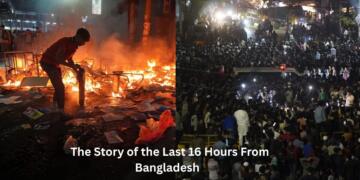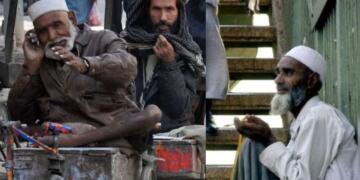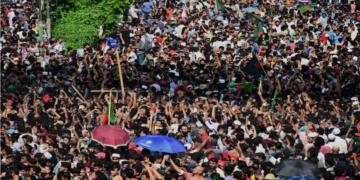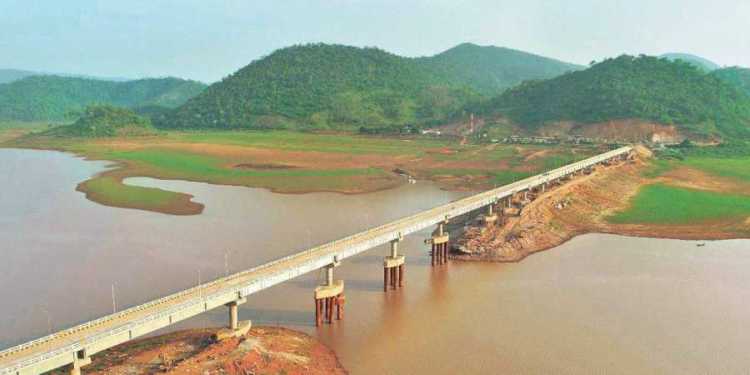In a pleasant development coming from Malkangiri district of Odisha, 151 villages of Malkangiri are all set to return to the mainstream after almost 50 years.
#GurupriyaSetu The life line of the Malkangiri people. To see this bridge we have to wait and struggle nearly half a century. It was a dream for the cut off area's 35000 Ppl. Dream came true. Thank you Hon'ble CM @Naveen_Odisha . pic.twitter.com/iWIU7saHdf
— Manoj Senapati (@manojsenapati08) July 26, 2018
#GurupriyaSetu signifies a resurgent #Odisha, will transform lives in 151 villages that were cut-off for 5 decades. It is not just a bridge, it will be the identity & Swabhiman of #Malkangiri. I dedicate this special project to people of #Odisha & India #JaiJagannath 1/4 pic.twitter.com/alrcNQejRc
— Naveen Patnaik (@Naveen_Odisha) July 26, 2018
On the other side of a large reservoir in Chutrakonda Forest area, lie 151 villages which are completely cut off from the political mainstream. Basic facilities like education, electricity, and healthcare have remained a dream for the residents of these 151 isolated villages. It is a water locked area. The area was cut off after the construction of the irrigation projects at Machhkund and Balimela in the 1960s and 80s, respectively.
Topographical Isolation of these villages provided the Maoists a safe haven. The Maoists found perfect refuge in these 151 villages. They, in fact, declared it as an independent territory.
On June 28, 2008, 37 anti-Maoists policemen of Greyhound Force were brutally killed by Maoists in an ambush. People demanded the state government to curb the menace of Maoism and Naxalism. Malkangiri is among the worst affected district by the menace of Maoism. The district has witnessed as many as 332 Maoist related incidents between the period of 2008 and 2018. Total 101 civilians and 77 security personnel lost their lives because of Maoism. The cut-off area itself has witnessed severe violence carried out by the Maoists. The cut-off area recorded the death of 25 civilian and 49 security forces, including 37 Greyhound forces.
Naveen Patnaik government of Odisha ran pillar to post to connect the cut-off area from mainland again. In his effort to bring the cut-off area into mainstream Odisha CM Naveen Patnaik also approached to central government during UPA rule but it paid no heed to Patnaik’s demand.
Fed up of central government’s negligence and careless attitude, Naveen Patnaik government itself started working on the bridge in 2014. The project was conceptualized in 1982 and now finally becoming a reality after almost 36 years. The 910-meter long Gurupriya bridge is constructed at the cost Rs 187 crores. It is no less than giving a new life to 35,000 villagers of the cut-off area. The villagers are now finally part of mainstream once again. The bridge will bring all-round transformation in the Maoist affected area. Facilities like health care, electricity and education now can be easily provided to the villagers. It will also boost the economic activities and would play a pivotal role in providing better livelihood opportunities to the villagers. Most importantly, it will enhance the government’s efforts to counter Maoism.
The state government, with the help of NDA government at the center, overcame all the difficulties to make Gurupriya bridge a reality. However, the threat of Maoists still remains. That’s why 38 flood lamps have been fixed under the bridge to keep an eye on any activity in the river. CCTV with night vision cameras has been also installed. A senior official of the state told ET, “We may still see landmine explosions and the occasional killing in the name of police informers but the Gurupriya shows that the battle is won. It has boosted the confidence of the state, its machinery, and its people.”
The complete credit for this project goes to Naveen Patnaik. He is one of the regional stalwarts who respect India’s security more than anything else. The Congress party must answer to the nation why it adopted an unresponsive attitude, especially after the attack.

































